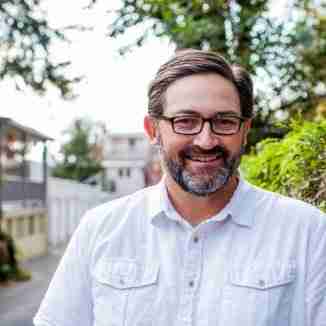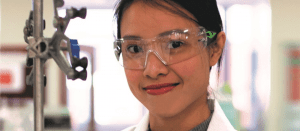
Why Batten Hope Foundation is Funding Gene Therapy Clinical Trials for Children with Rare Diseases
To hear Gina Hann speak about her son Joseph’s battle with an ultra-rare form of Batten disease is to experience the strength, toughness, graciousness, joy and optimism characteristic of the rare disease community. February is Rare Disease Month, a time when the entire rare disease community raises its collective voice to educate the public and advocate for rare disease patients and their families.
“When you’re initially dealing with a devastating diagnosis, you aren’t really aware of things like Rare Disease Month and what it means. That first year after Joseph’s diagnosis we didn’t even realize that rare disease day even existed,” shared Gina Hann, a rare disease parent, and Founder, President, and Treasurer of the non-profit advocacy group, Batten Hope.
“It wasn’t until a year later, when I went to Joseph’s school to talk about Batten to his classmates, that I realized how important Rare Disease Month can be. These kids and their parents didn’t know anything about Batten disease, but by explaining it to them in a fun way, we could share that rare disease just means Joseph is different, but that he is still a kid. It was so encouraging to see their response and willingness to learn and offer kindness for all rare kids. I walked away from the classroom that day understanding that Rare Disease Month is a great opportunity to share the rare disease message in a joyful way; it’s one month where the entire community can come together in a very meaningful way,” she added.
Joseph was diagnosed with Batten disease in March of 2017 at the age of four. By May of that same year, the Hann family founded Batten Hope to raise funding for gene therapy clinical trials and to help patients and families struggling with the devastating impacts of Batten disease. Batten Hope’s mission is to raise $400k in 2020. This will help fund clinical trial work that they have been working on in collaboration with UT Southwestern and Children’s Health in Dallas.
“Batten Hope exists to fund gene therapy R&D, specifically for Batten type CLN7, but it also exists to empower rare disease families by providing them a faster path to resources, funding, and information about the science behind the disease. We’ve tried to create an informal space for communication and I’ve discovered that the best helpers are often rare disease parents. There’s just so much to share,” added Hann.
Batten disease is a neurodegenerative condition that causes seizures, blindness, cognitive impairment, and early death; there are approximately 100,000 cases worldwide. Batten Disease is a lysosomal storage disorder, caused by a single gene mutation that prevents cells from breaking down fats and proteins, leading to a build-up of waste within neurons. This results in cell death and the body’s inability to function normally. The condition is autosomal recessive and there are fourteen known variants of Batten, with each type requiring its own research and trials.
For many families, just getting a diagnosis can be a long, frustrating odyssey. In fact, the term Diagnostic Odyssey is well-known throughout the rare disease community. The Hann family appreciates how fortunate they were to get a relatively fast diagnosis. After Joseph lost his vision and had his first seizure, the doctor in the ER, who had just read a scientific paper on Batten disease only two weeks prior to seeing Joseph, suggested the diagnosis to the family. Eight weeks later tests confirmed Joseph had an ultra-rare form of the disease.
“There are 7,000 or 8,000 rare diseases out there so there is an ocean of possible diagnosis. We were very fortunate to know almost right away. I can only imagine how horrible it must be to watch your child losing their abilities and you don’t know the cause,” she stated.
Despite everything Batten has taken away from Joseph, or Jo-Jo, as he is affectionately known to family and friends, Gina says Jo-Jo has kept his mischievous streak: “Joseph is playful and is always teasing his sisters. He loves to get in trouble and anytime he senses trouble coming he gets a big smile. He’s so sweet and fun and loves the same things he did before his diagnosis.”
“He is really just pure fun and little boyness. He is pure joy and the minute his suffering passes that joy is back,” she added.
The advancement of cell and gene therapies has given new hope to rare disease families across the globe. For the Hann family, and others like them, cell and gene therapy innovation, R&D and manufacturing investment are calculated risks for life science companies that have potentially life-saving ramifications for thousands and thousands of patients and families.
Vigene Biosciences, which recently held its grand opening celebration for its Rockville CDMO facility, is manufacturing the viral vector funded by Batten Hope in their goal of a gene therapy trial. Vigene Biosciences invited Hann to be a special guest at their grand opening celebration where she had the opportunity to speak directly to the Vigene team striving to help find a cure for Batten disease and other rare diseases.
Vigene’s mission, ‘To make gene therapy affordable’ speaks aligns with needs of rare disease foundations like Batten Hope and others.
Dr. Jeffrey Hung, Vigene’s Chief Commercial Officer, offered a toast at the grand opening ceremony that emphasized their commitment to that mission, sharing, “One of my most memorable and inspirational nights was spent at the Hann’s home where I met JoJo…Suddenly I realized that we are involved with something much bigger than ourselves. Vigene exists to deliver the cures and the hope to patients. Gene therapy manufacturing is not easy. We work hard to make gene therapy affordable for patients like JoJo…Here’s to the cures. And here’s to the hope.”
Reducing R&D and manufacturing costs through innovation and greater efficiency is the key to making these critical therapies more affordable to patients in the U.S. and across the globe. Vigene’s vertical integration approach empowers the company to take gene therapy all the way from concept through commercialization, faster and at a lower cost than its competition. With some 4,000 life science companies in its current and former client portfolio, Vigene will play a pivotal role in the effort to find new therapies for rare diseases and other areas of unmet need.
To develop and commercialize new rare disease treatments and cures, it will take the combined efforts of scientific research, bioscience companies, biomanufacturing facilities and the rare disease community all pulling in the same direction.
“The biggest thing I say to parents is to never underestimate your ability to change the outcome for your child or maybe another child. You have the opportunity to be the best advocate and change-maker for the scientific community and rare children. Sometimes parents get so overwhelmed, they forget we can pioneer this path and that we are an enormous group of people capable of driving tremendous change, especially when we work together,” stated Hann.
She added, “For the scientific community, I want them to know how critical their work is and the amazing possibilities of what they can do. Gene and enzyme manufacturing capacity is a huge issue right now. For families, the number one issue is lack of time and it takes a lot of time to get these therapies to the market. That’s why seeing Vigene open was so thrilling.”
Despite all that has befallen Joseph and her family, Hann remains fiercely optimistic about the future.
“I encourage any rare disease family to reach out to Batten Hope. I certainly don’t know all the answers but I am willing to help find them,” stated Hann.
“I think 2020 is going to be an amazing year and I think things are going to get so much better in the next decade for rare disease families. Today is the best possible time to get diagnosed with a rare disease and treatment options are going to get exponentially better. As hard as it is right now, I know it will get better,” she added with an exuberant optimism that is palpably remarkable, utterly inspiring and deeply moving.
The Hann family’s story is truly inspirational and the very essence of what Rare Disease Month is all about.
- About the Author
- Latest Posts
Steve brings nearly twenty years of experience in marketing and content creation to the WorkForce Genetics team. He loves writing engaging content and working with partners, companies, and individuals to share their unique stories and showcase their work. Steve holds a BA in English from Providence College and an MA in American Literature from Montclair State University. He lives in Frederick, Maryland with his wife, two sons, and the family dog.




